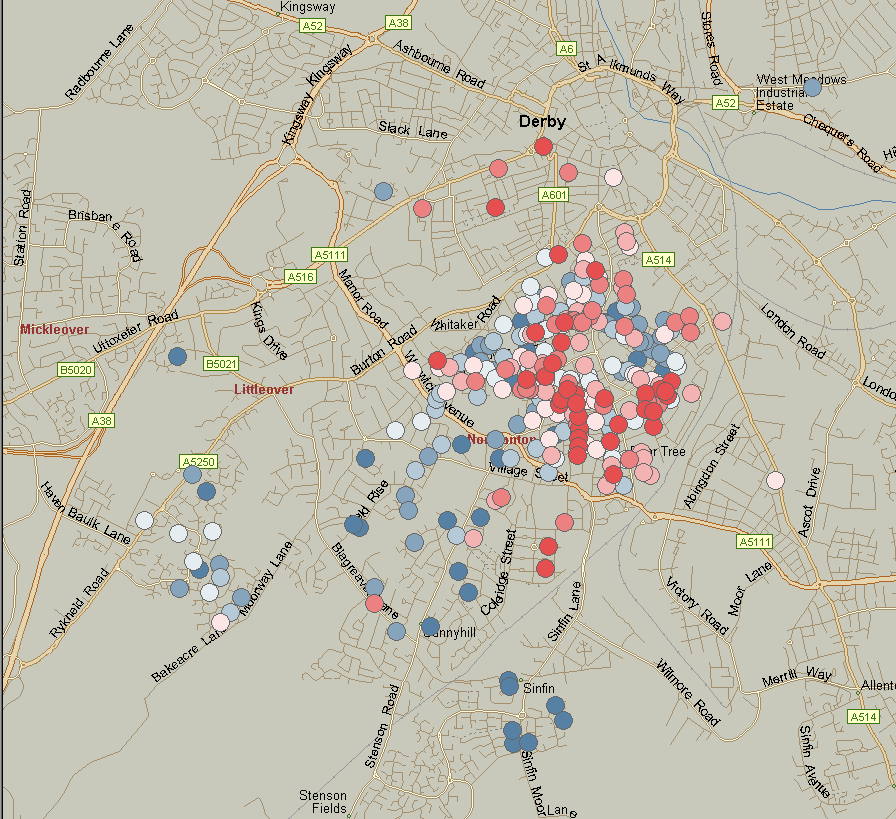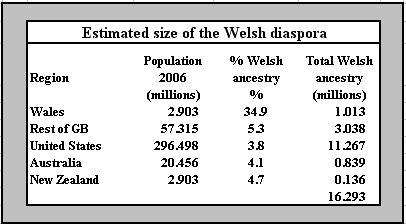· Richard Webber · Articles · 11 min read
Gender and Ethno-cultural Segregation at The National Theatre
This paper illustrates how the Origins software can provide insights into diversity among employees; in this case the list of employees of The National Theatre

Context
Webber Phillips is a specialist research and advisory company which provides data streams and evidence-based intelligence in the field of gender and ethno-cultural diversity.
We aim to promote improved organisational performance and better service to clients, customers and consumers through diversity analytics; in particular, through our ability to derive an ethno-cultural and gender breakdown of any population from their personal and family names.
Our Origins software uses a unique software package based on algorithms derived from access to 1.2 billion individual records, and a database of four million personal and family names.
The Case Study: The National Theatre
This paper illustrates how the Origins software can provide insights into diversity among employees; in this case the list of employees of The National Theatre. The National Theatre is a conscientious employer based in the most diverse city in the UK. Its management and Board have actively sought to tackle discrimination, and have deliberately developed programme offerings that would appeal to a wide and diverse audience. Our analysis demonstrates that in spite of considerable energy and focus, the National Theatre has some way to go to reach its own aims in this regard.
More importantly, this paper illustrates that using Origins software, Webber Phillips can provide fresh insights to organisations which would like to understand both their colleagues and their clients; and that we can provide accurate intelligence, quickly, non-intrusively and affordably. This report was compiled entirely from publicly available data, and wholly independently of the National Theatre itself.
Methodology
The raw data used in this study consists entirely of the information published in the programmes sold to theatre-goers before each performance of the production “Welcome to Thebes”. It is therefore not subject to data protection.
The names of the cast do not appear in the programme but the names of 721 other employees do, conveniently ordered by department e.g. “Archives” or “Video Associates”. This allowed us to allocate individuals to types of job, and to cross-reference by ethno-cultural group and gender.
By contrast to most staff surveys, no questionnaires are used, and the National Theatre was unaware of the exercise. We consider that this carries several advantages over past methods of collecting diversity data.
First, it is more accurate. Typically, one-third of staff fail to respond; a further proportion refuse to self-identify, and some of those who do self-identify choose the wrong category. Finally, response rates themselves vary by ethno-cultural grouping; for example, research by Glasgow City Council showed that visible minority employees were far less likely to return a self-identification questionnaire than their white British colleagues.
Overall, the typical survey is unlikely to achieve coverage in excess of 60%, Origins covers 99.5% of any population (a tiny fraction of names may not be recognised by the programme) and within that coverage, has been demonstrated to be at least 95% accurate in its breakdown.
The second major advantage of Origins is its granularity. The software recognises and classifies accurately into over 200 ethno-cultural and linguistic groupings, compared to the normal 5 or 6 typical of most surveys or staff records, or even the 17 derived from the census. This allows for greater flexibility of analysis – for example allowing aggregated religious, linguistic or geographical groupings to be compared as appropriate e.g. Celts with Hispanics or Slavs; or all Muslims, irrespective of geography compared with all non-Muslims.
These finer sub-divisions often reveal important differences. For example when it profiled its own staff, one FTSE 100 company was able to identify that among South Asians it employed a significantly higher number of Sikhs than would be expected based on their representation in the catchment of its headquarters and a significantly lower number of staff of Pakistani or Bangladeshi origin. Likewise a hospital found that the overrepresentation of Hispanics on its payroll resulted mostly from its recruitment of Filipino nurses and midwives.
A third advantage of Origins as a classification is that information, not being volunteered by the employee, is not deemed to be “confidential” within the meaning of the Data Protection Act. Thus access to this information does not need to be restricted to the same degree as is the case with volunteered information and so can be more easily used to analyse attributes of employees not held on their personnel record.
Ethno-cultural profile
Table 1 (over) shows the extent to which people from different cultural backgrounds are more or less likely to become members of the National Theatre workforce.
The table lists some of the more common Origins categories, the number and percentage of these groups among the Theatre’s staff, and the percentage of the group among London’s adult population. The right hand index column can be used to identify whether a group is under- or over-represented compared with London as a whole.
If the names of the workforce of the National Theatre were representative of the names of Greater London’s adult population then we would expect its 721 employees to divide 421 to 300 in terms of British / non-British names. The actual figures are 567 and 154. In other words people from non-British backgrounds are proportionately half as common among National Theatre employees as they are among London’s adult population.
But people from non-British backgrounds are not equally unlikely to work at the National Theatre.
Members of other Western European communities such as the Germans, Italians and French are proportionately just as likely as the white British to work at the Theatre.
People of West African and Greek Cypriot origins are less well represented.
The minorities that are largely absent from the theatre’s workforce are people whose backgrounds are from South Asia and the Muslim world. People from these communities are represented in the National Theatre workforce at only one-tenth of the level that would apply if the Theatre’s staff were ethno-culturally representative of London.
| Origins | Number of employees | % of employees | London % | c (% employees) as a % of d (% London) |
|---|---|---|---|---|
| ENGLAND | 404 | 56.0 | 44.2 | 126 |
| IRELAND | 54 | 7.5 | 5.6 | 134 |
| SCOTLAND | 66 | 9.2 | 5.4 | 168 |
| WALES | 43 | 6.0 | 3.6 | 164 |
| white British | 567 | 78.6 | 58.8 | 134 |
| INDIA HINDI | 2 | 0.3 | 3.2 | 8 |
| PAKISTAN | 2 | 0.3 | 2.6 | 10 |
| NIGERIA | 6 | 0.8 | 2.4 | 35 |
| ITALY | 17 | 2.4 | 2.0 | 117 |
| POLAND | 10 | 1.4 | 1.9 | 71 |
| GERMANY | 17 | 2.4 | 1.9 | 123 |
| TURKEY | 1 | 0.1 | 1.5 | 9 |
| OTHER MUSLIM | 2 | 0.3 | 1.4 | 19 |
| BANGLADESH MUSLIM | 0 | 0.0 | 1.4 | 0 |
| FRANCE | 8 | 1.1 | 1.3 | 83 |
| INDIA SIKH | 0 | 0.0 | 1.2 | 0 |
| GHANA | 3 | 0.4 | 1.2 | 35 |
| SPAIN | 4 | 0.6 | 1.1 | 51 |
| SRI LANKA | 0 | 0.0 | 1.0 | 0 |
| GREEK CYPRUS | 2 | 0.3 | 0.8 | 34 |
Table 1: How the ethnic diversity of National Theatre employees compares with that of Londoners
There are many possible explanations for this unevenness. It may be that people of South Asian origin tend not to want to work at the National Theatre and for this reason do not apply to do so. Or it may be that there are working practices within the National Theatre that make it an unattractive place for South Asians to work. It is possible that the recruitment process discriminates against them for instance by using informal networks to alert people to job vacancies.
In the final analysis it may be that there is no single reason for the differences. However by using Origins to profile job applications, which we were unable to do without seeking the National Theatre’s cooperation, we might find some of the answer to the question “why”, and be able to devise an appropriate response.
Occupational specialisation
Many organisations can justifiably pride themselves on their employees being representative of their local labour market. But diversity at the organisational level does not necessarily imply that individual departments, occupations or management levels are as diverse as they could or should be.
When we examine the National Theatre employees by the department in which they work we find clear – and unexplained - differences in the roles that people from white British, other white European and non-European backgrounds perform.
| Department | All | European or Hispanic | Non-European | White British | % White British | % Non- European |
|---|---|---|---|---|---|---|
| Total | 721 | 111 | 38 | 572 | 79.3 | 5.3 |
| CATERING | 147 | 58 | 20 | 69 | 46.9 | 13.6 |
| USHERS | 57 | 13 | 1 | 43 | 75.4 | 1.8 |
| COSTUMES | 47 | 3 | 2 | 42 | 89.4 | 4.3 |
| WORKSHOPS | 42 | 2 | 1 | 39 | 92.9 | 2.4 |
| BOX OFFICE | 30 | 4 | 1 | 25 | 83.3 | 3.3 |
| STAGES | 29 | 2 | 2 | 25 | 86.2 | 6.9 |
| STAGE MANAGEMENT | 23 | 0 | 0 | 23 | 100.0 | 0.0 |
| LIGHTING | 22 | 2 | 0 | 20 | 90.9 | 0.0 |
| ENGINEERING | 21 | 3 | 0 | 18 | 85.7 | 0.0 |
| SENIOR MANAGEMENT | 21 | 3 | 0 | 18 | 85.7 | 0.0 |
| FINANCE | 20 | 2 | 3 | 15 | 75.0 | 15.0 |
| SOUND | 20 | 1 | 0 | 19 | 95.0 | 0.0 |
| BOOKSHOP | 17 | 0 | 0 | 17 | 100.0 | 0.0 |
| DEVELOPMENT | 16 | 1 | 0 | 15 | 93.8 | 0.0 |
| NT ASSOCIATES | 15 | 1 | 0 | 14 | 93.3 | 0.0 |
| BOARD | 14 | 1 | 2 | 11 | 78.6 | 14.3 |
| DISCPROGRAMME | 14 | 2 | 0 | 12 | 85.7 | 0.0 |
| TECHNICAL ASSISTANCE | 12 | 1 | 0 | 11 | 91.7 | 0.0 |
| WIGS | 11 | 1 | 0 | 10 | 90.9 | 0.0 |
Table 2: Ethno-cultural distribution of staff by department
In Table 2, departments are ranked in descending order based on number of employees.
By some margin the catering department is both the largest and the most diverse department at the National Theatre . Over half of all non-Europeans employed at the National Theatre work in catering compared with fewer than one in eight of people with a British or Irish origin. Over a half of all non-British white Europeans also work in catering with a significant number also acting as ushers.
The board and the finance department are the only other parts of the National Theatre where there is a significant level of diversity.
The presence of non-whites in the catering department is almost certainly explained by members of this group primarily considering themselves as catering workers who have happened to find a catering job at the National Theatre. They are almost certainly not people who work at the National Theatre because of its particular appeal.
This attitude is likely to be the reverse of the position among the large contingent of non-British white Europeans among the ushers. Many of them are likely to be European students with an interest in the theatre, attracted to a part time role working with other theatre enthusiasts and ushering audiences with whom they share a common interest.
In neither case, the caterers nor the ushers, is working in their department likely form part of a long term career at the National Theatre.
Gender profile
Names can of course be equally usefully used to infer gender and to reveal gender differences by job function or department.
Of the 721 National Theatre employees, there are only 14 for whom gender could not be inferred from their personal name, whether because it is an obscure one, or one, such as “Jo” or “Robin”, which is regularly used by both sexes. Based on their personal names it seems that males outnumber females by a very small margin, 358 to 329.
| Department | Total | Known Female | Known Male |
|---|---|---|---|
| Total | 721 | 329 | 358 |
| CATERING | 147 | 71 | 68 |
| USHERS | 57 | 31 | 23 |
| COSTUMES | 47 | 38 | 6 |
| WORKSHOPS | 42 | 16 | 24 |
| BOX OFFICE | 30 | 11 | 18 |
| STAGES | 29 | 1 | 28 |
| STAGE MANAGEMENT | 23 | 12 | 10 |
| LIGHTING | 22 | 4 | 18 |
| ENGINEERING | 21 | 2 | 18 |
| SENIOR MANAGEMENT | 21 | 8 | 13 |
| FINANCE | 20 | 16 | 3 |
| SOUND | 20 | 3 | 15 |
| BOOKSHOP | 17 | 6 | 10 |
| DEVELOPMENT | 16 | 13 | 3 |
| NT ASSOCIATES | 15 | 4 | 10 |
| BOARD | 14 | 4 | 10 |
| DISCPROGRAMME | 14 | 7 | 6 |
| TECHNICAL ASSISTANCE | 12 | 1 | 10 |
| WIGS | 11 | 10 | 1 |
Table 3: Departmental specialisation by gender
However although the National Theatre payroll is balanced by gender overall, there is clear evidence that most staff find themselves working in teams where their own gender constitutes a much larger proportion of the workforce.
Interestingly, the two activities in which members of ethnic minorities are most highly represented, catering and ushering, are gender neutral activities. The obvious correspondence is that these are the lowest status, lowest-paid and least stringently recruited functions in the National Theatre – the organisation is open, as long as what you do doesn’t matter very much.
Departments such as the stage, sound, lighting, engineering and IT are almost exclusively the preserve of male workers; these are by contrast, highly-skilled craft occupations where hiring practices place a premium on previous experience.
Unsurprisingly, it is very rare for men to work in costumes or wigs; we would expect stereotypical expectations to play a role in this outcome. Harder to explain, however is the fact that it is uncommon for men to work in finance or development.
Among senior management and the board, as in most organisations, males outnumber females two to one.
Conclusions
Considering both ethno-cultural and gender identities, it is evident that aggregated statistics for the organisation as a whole reveal comparatively little. It is only when one analyses at the level of the functional department and detailed Origins types does it become apparent how very unequally groups are employed.
Whilst the figures are not conclusive, it is difficult to believe that overt discrimination is being practiced in terms of recruitment processes. It is more likely that specific genders and minorities are more or less attracted to work in particular departments because of the culture that they expect to, and probably would, find there.
As far as gender is concerned, whilst white men and white women are both attracted to jobs at the National Theatre, it would appear that the specialised culture and practices of selected departments, particularly those involved with the production rather than with direct interface with customers, can be both gender-attracting and gender-repelling.
In relation to ethno-cultural diversity the National Theatre is an organisation which has made a conscious effort to embrace diversity in the product that it offers. “Welcome to Thebes”, for example, is set in a Black African country. Black and Asian actors form the majority of the cast list.
Yet it is clear from any visit to the National Theatre that a corresponding shift has not taken place among its audiences. Whilst these may include a significant number of people of non-British origin, few are of non-European origin.
This might lead us to a rather radical conclusion, at odds with most organisations’ diversity strategy: that making the culture of these departments more attractive to under-represented genders and ethno-cultural groups would be a much more fruitful process than spending resources on searching for and removing any remaining discrimination in the recruitment process itself.
It would also suggest that the medium term solution to the National Theatre’s ethno-cultural diversity deficit lies in brand management and customer experience rather than in HR.
The ambience of the theatre and the format and cultural tradition of the theatrical productions contrives to create a leisure experience that does not attract Muslim, Sikh or Hindu communities in particular.
This is reflected, one would suppose, in the disinclination of these minorities to work at the Theatre, other than in the finance department. People with Hispanic, Black Caribbean and Black African backgrounds, whilst unlikely to attend a production, are nevertheless comfortable working at the National Theatre, albeit in functions that do not require them to be knowledgeable about the arts.
A Webber Phillips and Originsinfo collaboration

